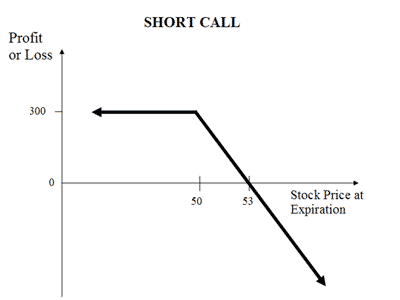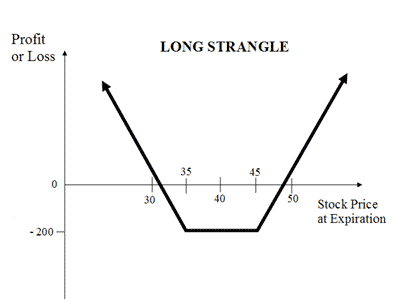 Zerodha (Trading & Demat Account)
Zerodha (Trading & Demat Account)
FREE Equity Delivery and MF
Flat ₹20/trade Intra-day/F&O
 Zerodha (Trading & Demat Account)
Zerodha (Trading & Demat Account)
FREE Equity Delivery and MF
Flat ₹20/trade Intra-day/F&O

|
|
Compare Short Call (Naked Call) and Long Strangle (Buy Strangle) options trading strategies. Find similarities and differences between Short Call (Naked Call) and Long Strangle (Buy Strangle) strategies. Find the best options trading strategy for your trading needs.
| Short Call (Naked Call) | Long Strangle (Buy Strangle) | |
|---|---|---|
 |
 |
|
| About Strategy | Short Call (or Naked Call) strategy involves the selling of the Call Options (or writing call option). In this strategy, a trader is Very Bearish in his market view and expects the price of the underlying asset to go down in near future. This strategy is highly risky with potential for unlimited losses and is generally preferred by experienced traders. The strategy involves taking a single position of selling a Call Option of any type i.e. ITM or OTM. These naked calls are also known as Out-Of-The-Money Naked Call and In-The-Money Naked Call based on the type you choose. This strategy has limited rewards (max profit is premium received) and unlimited loss potential. When the trader goes short on call, the trader sells a call option and e... Read More | The Long Strangle (or Buy Strangle or Option Strangle) is a neutral strategy wherein Slightly OTM Put Options and Slightly OTM Call are bought simultaneously with same underlying asset and expiry date. This strategy can be used when the trader expects that the underlying stock will experience significant volatility in the near term. It is a limited risk and unlimited reward strategy. The maximum loss is the net premium paid while maximum profit is achieved when the underlying moves either significantly upwards or downwards at expiration. The usual Long Strangle Strategy looks like as below for NIFTY current index value at 10400 (NIFTY Spot Price): Options Strangle Orders OrdersNIFTY Strike Price Buy 1 Slightly OTM PutN... Read More |
| Market View | Bearish | Neutral |
| Strategy Level | Advance | Beginners |
| Options Type | Call | Call + Put |
| Number of Positions | 1 | 2 |
| Risk Profile | Unlimited | Limited |
| Reward Profile | Limited | Unlimited |
| Breakeven Point | Strike Price of Short Call + Premium Received | two break-even points |
| Short Call (Naked Call) | Long Strangle (Buy Strangle) | |
|---|---|---|
| When to use? | It is an aggressive strategy and involves huge risks. It should be used only in case where trader is certain about the bearish market view on the underlying. |
A Long Strangle is meant for special scenarios where you foresee a lot of volatility in the market due to election results, budget, policy change, annual result announcements etc. |
| Market View | Bearish When you are expecting the price of the underlying or its volatility to only moderately increase. |
Neutral When you are unsure of the direction of the underlying but expecting high volatility in it. |
| Action |
|
Suppose Nifty is currently at 10400 and you expect the price to move sharply but are unsure about the direction. In such a scenario, you can execute long strangle strategy by buying Nifty at 10600 and at 10800. The net premium paid will be your maximum loss while the profit will depend on how high or low the index moves. |
| Breakeven Point | Strike Price of Short Call + Premium Received Break even is achieved when the price of the underlying is equal to total of strike price and premium received. |
two break-even points A Options Strangle strategy has two break-even points. Lower Breakeven Point = Strike Price of Put - Net Premium Upper Breakeven Point = Strike Price of Call + Net Premium |
| Short Call (Naked Call) | Long Strangle (Buy Strangle) | |
|---|---|---|
| Risks | Unlimited There risk is unlimited and depend on how high the price of the underlying moves. |
Limited Max Loss = Net Premium Paid The maximum loss is limited to the net premium paid in the long strangle strategy. It occurs when the price of the underlying is trading between the strike price of Options. |
| Rewards | Limited The profit is limited to the premium received. |
Unlimited Maximum profit is achieved when the underlying moves significantly up and down at expiration. Profit = Price of Underlying - Strike Price of Long Call - Net Premium Paid Or Profit = Strike Price of Long Put - Price of Underlying - Net Premium Paid |
| Maximum Profit Scenario | When underline asset goes down and option not exercised.
|
One Option exercised |
| Maximum Loss Scenario | When underline asset goes up and option exercised.
|
Both Option not exercised |
| Short Call (Naked Call) | Long Strangle (Buy Strangle) | |
|---|---|---|
| Advantages | This strategy allows you to profit from falling prices in the underlying asset. |
|
| Disadvantage | There's unlimited risk on the upside as you are selling Option without holding the underlying. Rewards are limited to premium received only. |
The strategy requires significant price movements in the underlying to gain profits. |
| Simillar Strategies | Covered Put, Covered Calls, Bear Call Spread | Long Straddle, Short Strangle |

Add a public comment...

FREE Intraday Trading (Eq, F&O)
Flat ₹20 Per Trade in F&O
|
|